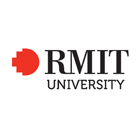Bachelor of Environmental Science
- Home
- Courses
- RMIT University (Royal Melbourne Institute of Technology University)
- Bachelor of Environmental Science
Bachelor of Environmental Science
The environment faces threats and challenges that include climate change, habitat loss, overpopulation, emerging contaminant and pollution events, and food and water security. The breadth of these environmental challenges requires a combination of knowledge and skills in chemistry, biology, statistics, research and earth sciences for an interdisciplinary approach to surmounting…
Categories
COURSE DESCRIPTION
The environment faces threats and challenges that include climate change, habitat loss, overpopulation, emerging contaminant and pollution events, and food and water security.
The breadth of these environmental challenges requires a combination of knowledge and skills in chemistry, biology, statistics, research and earth sciences for an interdisciplinary approach to surmounting these difficulties.
In RMIT’s Bachelor of Environmental Science, you will learn about the biogeochemical processes that occur in both natural and degraded environments, and specialise with areas of study such as environmental biology, environmental chemistry, geosciences or geospatial sciences.
Over the course of your environmental studies, you will undertake both practical and industry-relevant activities, where you will:
gain considerable hands-on experience with equipment, both in the laboratory and in the field
undertake frequent field trips during the second and third year
work on collaborative projects with industry, gaining hands-on experience.
These activities involve working in small groups to foster teamwork and a collaborative approach to research and projects.
Career
Your environmental science career
Environmental scientists who graduate from RMIT University find employment in consultancies, government agencies, resource management, research and education, mining, and manufacturing.
Your work as an environmental scientist may involve laboratory work, field work, report writing, and research.
Typical tasks graduates perform include:
sample collection and analysis
waste management
ongoing monitoring and assessment
environmental impact assessment
site remediation
policy development
cleaner production
environmental education and training
emerging contaminant analysis
environmental auditing.
Many RMIT graduates are now in senior positions in several industry areas, including:
The Environment Protection Authority (EPA)
Department of Environment, Land, Water and Planning (DELWP)
The Commonwealth Scientific and Industrial Research Organisation (CSIRO)
catchment management authorities
agricultural and research agencies
environmental consultancies
higher education.
Please note: The BP192P6 plan code is no longer available. All applicants should apply for the BP192P23 plan code.
EDUCATIONAL INSTITUTION
Since its establishment in 1887, Royal Melbourne Institute of Technology University (RMIT) has been meeting the needs of the community surrounding it. Originally a Working Men’s College, RMIT showed its flexibility during World War Two, training over 20,000 servicemen in communications to help with the war effort.Now, it is a true pioneer in international education, championing cross-border study opportunities with campuses in various countries. Granted formal university status in 1992, RMIT is ranked 21st in the world for universities that are less than 50 years old.RMIT is the largest higher education institution in Australia, currently with more than 82,000 students. With nearly 20% of those students coming from overseas, it is a university that truly welcomes diversity and is a melting pot of different cultures. RMIT has three campuses in Vietnam, a European hub in Barcelona, an office in Indonesia, and partners with 200+ institutions in 42 countries to provide study opportunities worldwide.
Since its establishment in 1887, Royal Melbourne Institute of Technology University (RMIT) has been meeting the needs of the community surrounding it. Originally a Working Men’s College, RMIT showed its flexibility during World War Two, training over 20,000 servicemen in communications to help with the war effort.
Now, it is a true pioneer in international education, championing cross-border study opportunities with campuses in various countries. Granted formal university status in 1992, RMIT is ranked 21st in the world for universities that are less than 50 years old.
RMIT is the largest higher education institution in Australia, currently with more than 82,000 students. With nearly 20% of those students coming from overseas, it is a university that truly welcomes diversity and is a melting pot of different cultures. RMIT has three campuses in Vietnam, a European hub in Barcelona, an office in Indonesia, and partners with 200+ institutions in 42 countries to provide study opportunities worldwide.




